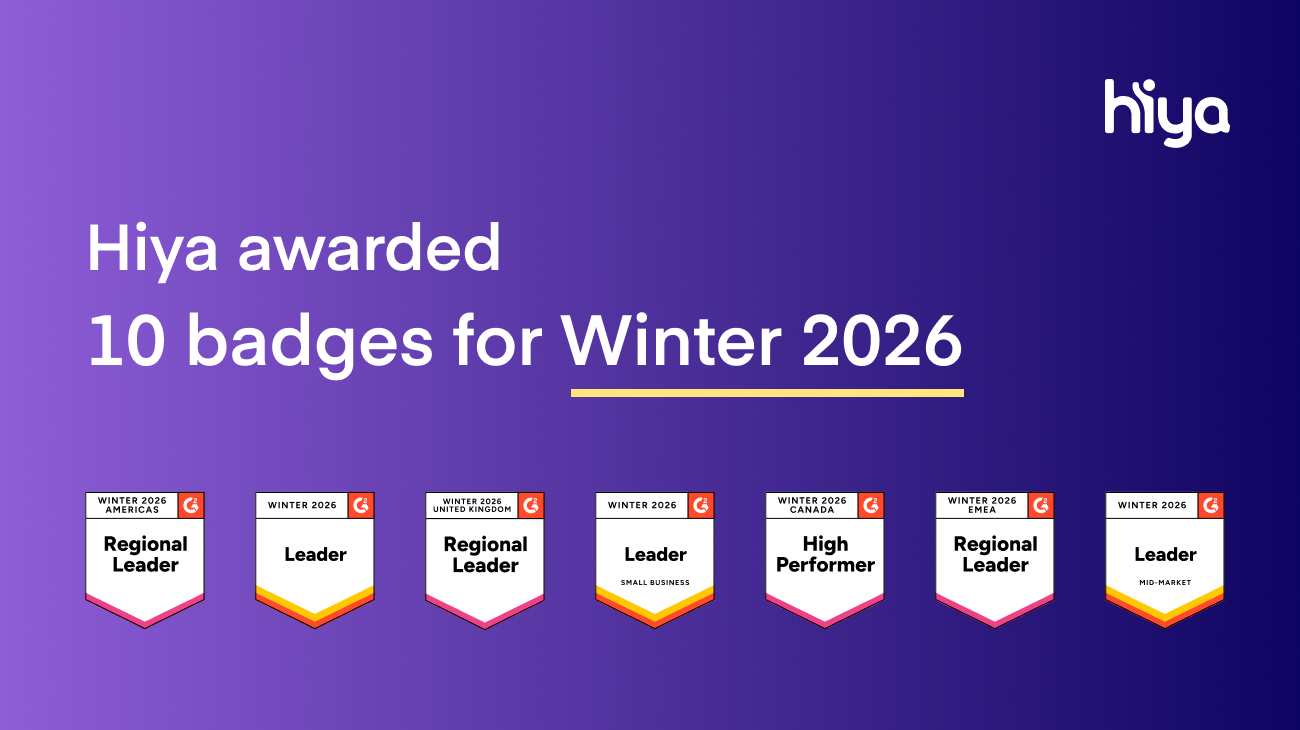
There’s no doubt about it. Spam and fraud calls are an increasingly annoying nuisance for consumers, with people receiving an average of 14 spam calls a month. The scammers are highly sophisticated, enticing people with scam phone numbers that seem legit enough to pick up the phone.
Phone scams are an annoyance for carriers too, as they negatively impact subscriber experiences and create distrust. In fact, we recently asked consumers around the globe if they felt their carriers were doing enough to reduce spam and fraud calls – and only 42% believe they are.
STIR/SHAKEN, a framework designed by the Federal Communications Commission (FCC) to reduce robocalls by verifying the digital signature of the outbound call, has attempted to help stop spam and fraud calls, but with little success. The volume of scam calls went down after the implementation of this framework in mid-2021, but the impact was short-lived and the volume is on the rise again as scammers have figured a way around it.
The promised payoffs capture innocent victims
The themes of scam phone calls are well-known at this point, but the scammers are still can find the most vulnerable and susceptible people. They hook their victims by offering financial gains or prizes that people can’t seem to refuse. The scammers also use believable scare tactics, such as an imminent arrest of a loved one if money isn’t sent immediately.
Time and time again, people naively fall for these campaigns, offering up sensitive personal information, financial data, or money.
The top ten phone scams that still get the best of people!
Here are the most common scam phone call campaigns that we’re actively seeing right now.
-
Imposter scams – scammers pretend to represent well-known organizations, like the Internal Revenue Service (IRS) in the United States.
-
Debt relief and credit repair scams – callers promise relief through financial assistance or recovery programs, all of which are bogus and only cause more monetary problems.
-
Business and investment scams – members of a criminal organization in Europe defrauded victims by offering fake investment opportunities. Before they were arrested, they netted more than $3 million a month.
-
Charity scams – people who want to support service organizations, such as police forces or humanitarian relief groups, can easily be taken advantage of.
-
Extended car warranties – scammers in the United States posing as a car dealership, manufacturer, or insurer get people with “expiring” pitches.
-
Free trials – free anything, from gym memberships and health products to mobile phones or computers, can lure people into giving away precious information for “free”.
-
Loan scams – student loan forgiveness is a big hook for recently graduated college kids who have the burden of paying for their education for years and years.
-
Prize and lottery scams – “you have won!” gets the unsuspecting excited enough to turn over privileged personal data.
-
Travel and timeshare scams – similar to some of the campaigns above, these scams offer people an opportunity to escape to paradise for a price that just isn’t worth it.
-
Eavesdropping scam – relatively new, scammers now use an automated call that leaves what appears to be a voice message of a real conversation in order to lure someone call back. People may get charged for the call back or they may be stung by a series of enticing fraudulent offers.
Protect your network subscribers
There is finally a way to stop and block scammers in real-time with call protection that has up to a 90% effective rate. Adaptive AI, which is part of Hiya Protect, provides a way for carriers to warn subscribers against spam and fraud in real-time as they receive the calls. It continuously learns to assess new tactics and spam risks in real-time without data scientists adding new models to the system.
Adaptive AI evaluates calls as it looks for new patterns that would indicate spam. It can examine which carrier originated the call, what country it came from, and if its network signature indicates spam risk. As an example, Adaptive AI can distinguish between 17 categories of spam calls as it stays on top of the latest scam trends.
The success of Adaptive AI can be seen in the car warranty campaign mentioned above, where Hiya’s service blocked almost 90% of the robocalls for subscribers.
To learn more about phone call scams and how carriers can stop them, download the Hiya 2022 State of the Call Report or request a demo of Hiya Protect to see it in action.



